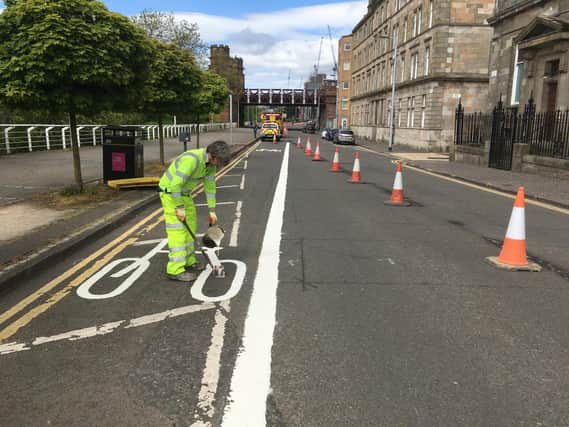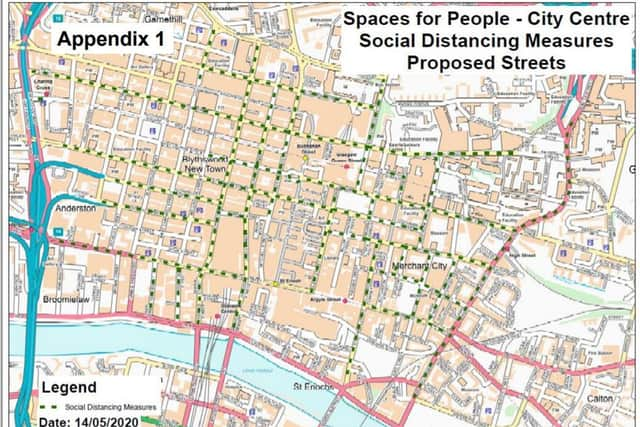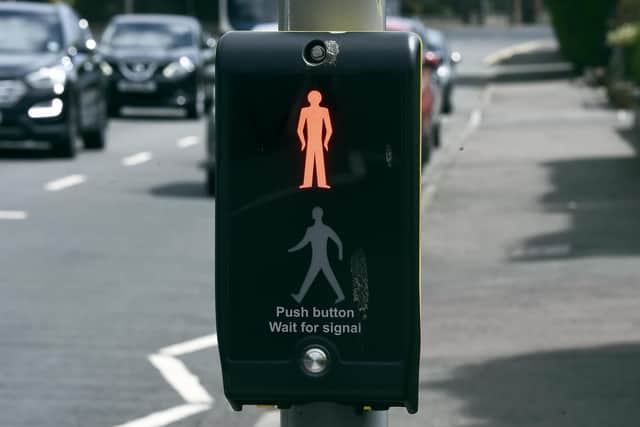A green man revolution is coming to Edinburgh and Glasgow - Alastair Dalton


But what has emerged is that some Scottish cities are going far further, with radical plans that “active travel” campaigners will welcome as the streets being finally reclaimed but are likely to equally enrage diehard motorists.
The Covid-19 crisis, with its severe restrictions on public transport capacity, could prove to be the catalyst to rebalance city centres away from the car.
Advertisement
Hide AdAdvertisement
Hide AdIt’s a goal some transport planners have been striving towards for decades.


And it is not just Edinburgh - traditionally seen as being in the vanguard of green travel innovations - that is leading the way.
Glasgow has produced some equally bold proposals, which include temporarily removing most of the 2,000 parking spaces from city centre streets other than those for disabled drivers.
The city council argues there is plenty of room in car parks, which are rarely more than half full.
Advertisement
Hide AdAdvertisement
Hide AdIn fact, this was what was originally envisaged when the M8 was built through Glasgow - drivers parking at one of a new ring of multi-storey car parks on the edge of the city centre and continuing on foot.


The move would free up 15 miles of streets for walkers and cyclists - for use by people actually moving as opposed to storing motionless metal boxes.
In other areas of the city, parking spaces could be ditched so people could physically distance outside shops.
Remaining “rat runs” in residential areas would be blocked off to stop drivers taking short cuts deterring walking and cycling.
Planned car-free zones around schools may be accelerated.
Advertisement
Hide AdAdvertisement
Hide AdBut I believe what is equally significant are the plans to make it easier for people to cross the road - and help prevent a build-up of waiting pedestrians.
As I’ve written several times before, the green man at traffic lights in Glasgow can be a frustratingly rare sight, with vehicles getting two rounds of green lights at some junctions before pedestrians can safely cross.
However, this could be turned on its head at some intersections with proposals to make the green man the default instead, which would only change as vehicles approached.
Advertisement
Hide AdAdvertisement
Hide AdThis follows a trial at the previously-busy of Argyle/Queen Street junction.
At other crossings, the green man will stay on for longer.
In Edinburgh, since last week the green man has come on automatically as the lights change at 101 junctions without the need for pedestrians to push the button.
This has been extended from the busiest intersections for walkers, such as on the Royal Mile, and is likely to be repeated at yet more.
Other measures already planned for the capital will be accelerated, such as banning cars from city centre streets like the east end of Princes Street, and East Market Street.
Advertisement
Hide AdAdvertisement
Hide AdThrough traffic would be barred from Cockburn Street and Victoria Street in the Old Town and parking reduced.
Waverley Bridge would be closed to all traffic.
With £30 million of Scottish Government funding up for grabs for such measures, expect to see other councils follow suit.
Nearly half of the cash has already been allocated to nine local authorities, which also include Aberdeen, Dundee and Highland, which covers Inverness.
Almost all of Scotland’s 23 other councils have expressed interest.
Advertisement
Hide AdAdvertisement
Hide AdSomething positive, many would argue, to come out of the pandemic.
A message from the Editor:
Thank you for reading this story on our website.
While I have your attention, I also have an important request to make of you.
With the coronavirus lockdown having a major impact on many of our advertisers - and consequently the revenue we receive - we are more reliant than ever on you taking out a digital subscription
Subscribe to scotsman.com and enjoy unlimited access to Scottish news and information online and on our app.
Advertisement
Hide AdAdvertisement
Hide AdWith a digital subscription, you can read more than 5 articles, see fewer ads, enjoy faster load times, and get access to exclusive newsletters and content.
Visit https://www.scotsman.com/subscriptions now to sign up.
Our journalism costs money and we rely on advertising, print and digital revenues to help to support them.
By supporting us, we are able to support you in providing trusted, fact-checked content for this website.
Joy Yates
Editorial Director
Comment Guidelines
National World encourages reader discussion on our stories. User feedback, insights and back-and-forth exchanges add a rich layer of context to reporting. Please review our Community Guidelines before commenting.